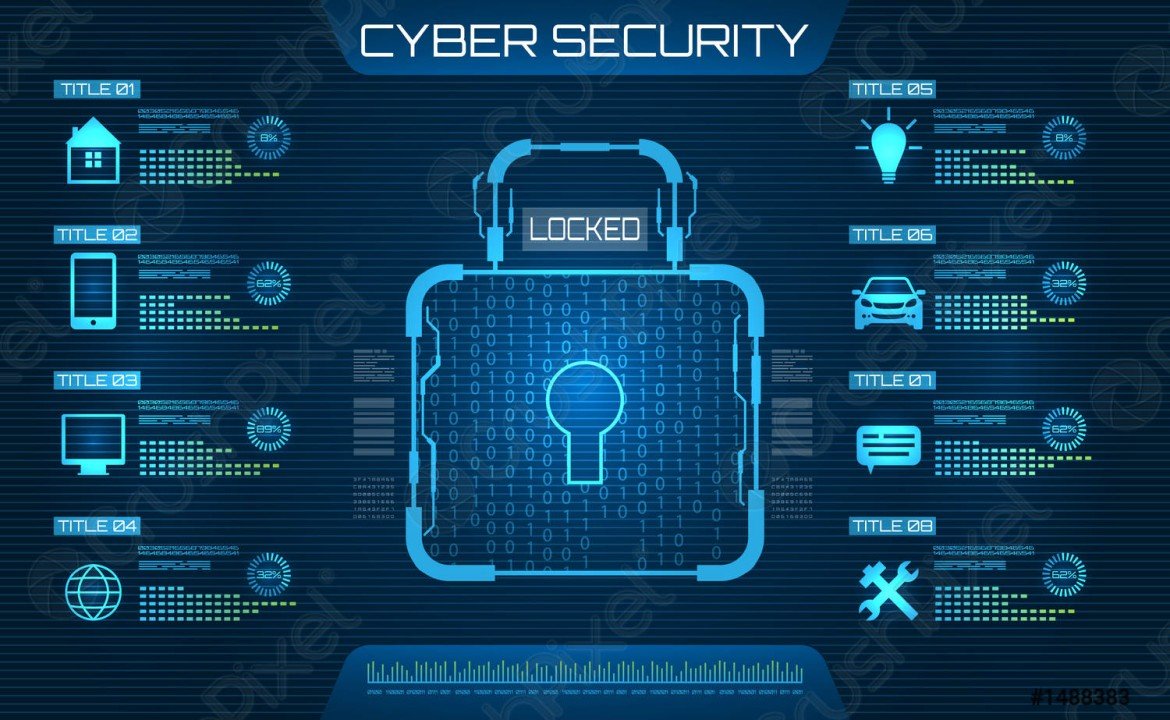The Importance of Cybersecurity in Today’s Digital Landscape
In an era where digital technology is deeply integrated into every aspect of our lives, cybersecurity has become more critical than ever. With the rapid advancement of technology and the increasing reliance on digital systems, protecting sensitive data and ensuring robust security measures are paramount. This blog post explores the importance of cybersecurity in today’s digital landscape, highlighting the reasons why it should be a top priority for individuals and organizations alike.
The Rising Threat of Cyber Attacks
1. Increased Frequency of Attacks
Cyber attacks are becoming more frequent and sophisticated. Attackers employ various techniques, including phishing, ransomware, and advanced persistent threats (APTs), to compromise systems and steal valuable data. The rise in cyber threats underscores the need for proactive cybersecurity measures to safeguard digital assets.
2. Diverse Attack Vectors
Cybercriminals exploit multiple attack vectors to gain unauthorized access to systems. These include:
- Email Phishing: Deceptive emails designed to trick recipients into revealing sensitive information or downloading malicious attachments.
- Malware: Malicious software designed to damage, disrupt, or gain unauthorized access to computer systems.
- Social Engineering: Manipulative tactics used to deceive individuals into divulging confidential information or performing actions that compromise security.

Protecting Sensitive Data
1. Data Privacy
Cybersecurity plays a crucial role in protecting personal and sensitive data. Data breaches can lead to:
- Identity Theft: Unauthorized access to personal information can result in identity theft and financial loss.
- Regulatory Penalties: Organizations that fail to protect sensitive data may face legal consequences and substantial fines under regulations such as GDPR and CCPA.
2. Intellectual Property
For businesses, safeguarding intellectual property (IP) is essential to maintaining a competitive edge. Cybersecurity measures help protect:
- Trade Secrets: Confidential business information that provides a competitive advantage.
- Proprietary Technologies: Innovations and technologies that are critical to a company’s success.
Mitigating Business Risks
1. Operational Disruption
Cyber attacks can disrupt business operations, causing significant financial and reputational damage. Risks include:
- Downtime: Extended periods of system unavailability can impact productivity and customer satisfaction.
- Data Loss: Loss of critical business data can result in operational setbacks and financial losses.
2. Reputation Management
A data breach or cyber attack can severely damage an organization’s reputation. Maintaining robust cybersecurity helps:
- Build Trust: Demonstrating a commitment to cybersecurity fosters trust among customers, partners, and stakeholders.
- Protect Brand Integrity: A strong security posture helps preserve the integrity and credibility of the organization.
Ensuring Business Continuity
1. Disaster Recovery
Effective cybersecurity includes disaster recovery planning to ensure business continuity in the event of a cyber incident. Key components include:
- Backup Solutions: Regularly backing up data and systems to recover quickly from a cyber attack or system failure.
- Incident Response Plans: Developing and implementing plans to respond to and mitigate the impact of cyber incidents.
2. Resilience Against Evolving Threats
Cybersecurity measures must evolve to address emerging threats and vulnerabilities. Staying ahead of the threat landscape involves:
- Continuous Monitoring: Implementing tools and practices to continuously monitor and detect potential threats.
- Regular Updates: Keeping systems, software, and security protocols up to date to defend against the latest cyber threats.
Best Practices for Cybersecurity
1. Implement Strong Access Controls
Control access to systems and data by:
- Using Multi-Factor Authentication (MFA): Adding an extra layer of security to verify user identities.
- Enforcing Role-Based Access: Restricting access to information based on user roles and responsibilities.
2. Educate and Train Employees
Employee awareness and training are critical for cybersecurity:
- Phishing Awareness: Educating employees about phishing and social engineering tactics to recognize and avoid them.
- Secure Practices: Training employees on secure practices, such as password management and data protection.
3. Deploy Comprehensive Security Solutions
Use a combination of security solutions to protect against various threats:
- Firewalls: Implementing firewalls to filter and block malicious traffic.
- Antivirus Software: Using antivirus programs to detect and remove malware.
- Encryption: Encrypting sensitive data to prevent unauthorized access and ensure confidentiality.
Conclusion
In today’s digital landscape, cybersecurity is not just a technical requirement but a fundamental component of business strategy and personal protection. As cyber threats continue to evolve, it is essential for individuals and organizations to prioritize cybersecurity, implement best practices, and stay vigilant against potential risks. By investing in robust cybersecurity measures, protecting sensitive data, and ensuring business continuity, we can navigate the digital world with greater confidence and resilience.



